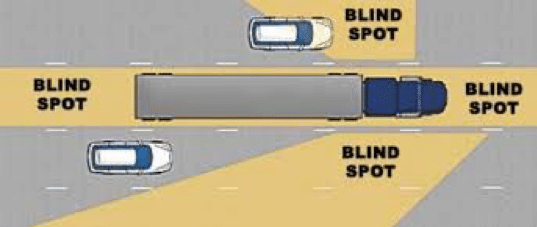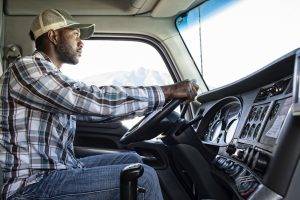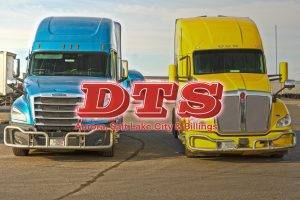Sixteen years ago, DTS began teaching high school students in the Billings area how to share the road with Semi-trucks. We average 1300 student drivers a year. It’s a good feeling knowing that our kids are learning to be safe and responsible drivers out there, but what about us older drivers?
Share-The-Road didn’t exist when I was a teen. Driver’s education is some distance behind me, and if there were any life-saving tips about sharing the road with big trucks I don’t remember hearing them. At any rate, here’s a refresher for all my fellow, seasoned drivers. ????
- Most semi-trucks are 60-70 foot in length. Fully loaded, they can weigh 80,000 pounds total weight unless permitted for heavier loads. It takes roughly the length of a football field to stop a fully loaded semi-truck.
- Semi-trucks not only have to follow state traffic laws, but also have to follow Federal regulations on commercial vehicles and drivers.
- When riding behind a semi-truck, maintain at least a 20 – 25 car lengths following distance, or 4-5 seconds behind on dry roads. 8 – 10 seconds in inclement weather. Stay far enough behind that you are able to see the driver in his mirror, or any debris that may be on the road.
- Semi-truck tires are carrying 110 psi (pounds per square inch) of air in them. If one or more blows out, the rubber and other debris often is thrown behind the trailer at a high speed.
- Make sure you can see the driver in the mirror and that he sees you before you pass. Move deliberately and quickly when passing. Make sure you can see the trucks headlights and front tires, about 4 car lengths, before pulling in front of semi-trucks.
- One of the disadvantages cars have is that the side mirrors on the front doors show objects further away than they really are. They really do. Check it in your own driveway. Most side mirrors even have it printed on them. Therefore, when passing and re-entering a lane, a driver may think they are plenty of distance away from a vehicle being passed when they actually are not.
- There are 4 large blind spots along all four sides of a truck:

- For motorcycles, when riding in a group, pass single file on the far side of the lane.
- Also, motorcyclists, when passing be aware of strong crosswinds or air turbulence coming off of the truck. Some winds can be strong enough to push you right out of your lane.
- Turn signals should be turned on approximately a quarter of a mile from an exit, and fifty feet from a turn. Flashers should be used when having to stop on the roadway, other than at a stop sign or railroad crossing.
- Allow trucks space when at intersections, they need to make wide turns.
- Avoid “Squeeze Play.” Truck drivers sometimes need to swing wide to the left in order to safely negotiate a right turn, especially in urban areas. Drivers cannot see directly behind or beside them, so cutting in between the truck and the curb increases the possibility of a crash, or a “squeeze.” Pay attention to truck signals and give them plenty of room to maneuver.





